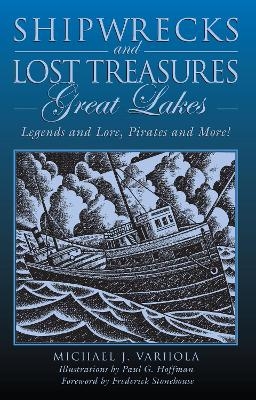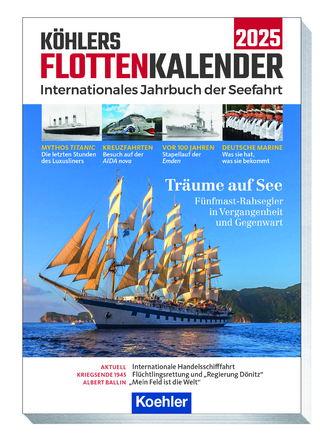
Shipwrecks and Lost Treasures: Great Lakes
Globe Pequot Press (Verlag)
978-0-7627-4492-3 (ISBN)
Twenty-one riveting stories and illustrations about ships that met their end in the treacherous waters of the Great Lakes, such as: British gunboat H.M.S. Speedy in 1804, American Navy brig U.S.S. Niagara in 1820, Civil War steamer Island Queen in 1864, the infamous freighter Edmund Fitzgerald in 1975, and many more!
Michael J. Varhola is a freelance journalist, author or co-author of numerous books and innumerable articles, publisher of several publications, a veteran of the U.S. Army, and an avid sailor who is rated to pilot vessels up to 50 feet in length. A native of the port city of Erie, Pennsylvania, he grew up listening to stories about shipping on the Great Lakes from his father, who served as a merchant seaman aboard the S.S. North American. He lives in Springfield, Virginia. Frederick Stonehouse, noted Great Lakes maritime historian and lecturer, is author of more than 25 books.
Foreword (November 10, 2006; Whitefish Point, Michigan)Written at the day and place that the wreck of the Edmund Fitzgerald is commemorated. IntroductionAbout This BookWhat is a Shipwreck? Treasure of the Great LakesWhat passes for treasure in the Great Lakes is generally buried under hundreds of feet of water and takes the form of the cargoes carried by now-wrecked ships November GalesGreat Lakes Storm of 1913The Marysburgh VortexThis phenomenon is often described as the “Bermuda Triangle of the Great Lakes.” Modern DiscoveriesTechnological advances like sonar and improved dive capabilities have revealed much about past shipwrecks that was once simply a mystery. Chapter 1: H.M.S. Speedy (1804)The British gunboat H.M.S. Speedy sank in a blinding snowstorm in Lake Ontario with the loss of all hands, an event that changed the course of Canadian history because of the prominence of the citizens from the colony of Upper Canada lost. Chapter 2: H.M.S. Detroit (1813)Originally christened as the U.S. brig Adams, the British captured the ship, renamed it, and subsequently used it to dominate Lake Erie. Americans recaptured Detroit but could not escape with it and burned it instead.Chapter 3: U.S.S. Niagara (1820)This U.S. Navy brig served during the War of 1812 as Commodore Oliver Hazard Perry’s flagship during the Battle of Lake Erie, after the U.S.S. Lawrence was disabled by gunfire. Unlike most Great Lakes shipwrecks, it was deliberately sunk in order to preserve it and allow it to be raised again later.Chapter 4: Lady Elgin (1860)This passenger steamer was struck by another vessel while returning hundreds of people home from a political rally. It broke apart and more than 400 people perished before they could be rescued. Chapter 5: Island Queen (1864)In one of the few Civil War military actions to spill into the Great Lakes, a party of 20 Confederates led by Acting Master John Yates Beall captured two steamers and burned the Island Queen. Chapter 6: Alpena (1880)The sidewheel steamer Alpena was one of many ships wrecked in Lake Michigan during the “Big Blow” of October 1880. At least 80 people died when it went down. Chapter 7: Helena (1891)This oak-hulled steamer was struck by a steel vessel and sunk with a load of coal in 30 feet of water. It is an interesting example of a ship that was wrecked under one name, raised, repaired, and rechristened with a new name — and subsequently wrecked again (see Amboy, below). Chapter 8: Bannockburn (1902)For more than a century, the unexplained disappearance of this Montreal Transportation Co. freighter has been one of the classic “ghost ship” tale of the Great Lakes. All that was ever found of the vessel was an oar and a single life jacket with its straps tied together.Chapter 9: Thomas Wilson (1902)One of a locally developed line of “whaleback” ships, the Thomas Wilson was struck by another ship during its approach to Duluth. Both vessels were sunk as a result. Chapter 10: Amboy (1905, renamed from Helena, sunk in 1891)After being wrecked once, this ship was raised, refurbished, and relaunched with a new name. It could not escape its fate, however, and was sunk once again. Chapter 11: Mataafa (1905)After 1905, every Great Lakes captain knew the horrifying story of this vessel, which smashed into a pier and then broke in half, dooming the sailors who remained in the stern of the ship to freeze to death. Chapter 12: Kaliyuga (1905)After this freighter went missing in the Great Gale of 1905, local legends arose claiming that she could be seen moving through the fog around Thunder Bay and heard sounding distress signals on stormy nights. Chapter 13: Charles S. Price (1913)This freighter was one of a record number of ships wrecked — and its crew among a record number of men lost — in one of the worst storms to ever wrack the Great Lakes. Chapter 14: Benjamin Noble (1914)Heavily overburdened, this canaller beat the odds during a struggle of three days and was lost with all hands after coming within sight of its destination port. Chapter 15: Eastland (1915)This large passenger steamer rolled onto its side of water in the port of Chicago with nearly 3,000 people on board. Despite being close to shore and in just 20 feet of water, some 845 people were killed in the disaster. Chapter 16: SS Milwaukee (1929)Recently rediscovered and explored by divers, this shipwrecked “car ferry” went down with a full load of railway cars, most of them loaded with new Ford automobiles. Chapter 17: Wisconsin (1929) Renamed six times in its 48-year career, this liner was overwhelmed while attempting to ride out a storm and foundered off of Kenosha. Unlike many vessels that went down with all hands lost, 56 of the 76 people on board managed to survive the wreck, even though the vessel was an unrecoverable loss. Chapter 18: Anna C. Minch (1940)This steam-powered steel cargo carrier went down in a storm in Lake Michigan, taking with it all 24 crew members and a cargo of hardwood lumber. Chapter 19: SS Noronic (1949)Fire consumed this large passenger ship in Toronto Harbor, destroying it and killing as many as 139 people. Chapter 20: SS Carl D. Bradley (1958)Two sailors survived the wreck of this ship in a life raft after this self-loading freighter broke in half and went down in a powerful storm. Thirty-three of their companions perished in the disaster, only 18 of whom were ever recovered. Chapter 21: SS Edmund Fitzgerald (1975)Perhaps the most famous of all Great Lakes shipwrecks, this doomed freighter went down with all hands in a powerful freak storm. Its fate was commemorated in the melancholy and widely popular Gordon Lightfoot song, “The Wreck of the Edmund Fitzgerald.” Appendix I: EndotesAppendix II: Glossary of Nautical TermsAppendix III: List of Shipwrecks by YearAppendix IV: Further Reading and ResourcesBooks and Other MediaMuseums and Historic SitesIndex
| Illustrationen | Paul G. Hoffman |
|---|---|
| Vorwort | Frederick Stonehouse |
| Verlagsort | Old Saybrook |
| Sprache | englisch |
| Maße | 140 x 216 mm |
| Gewicht | 312 g |
| Themenwelt | Natur / Technik ► Fahrzeuge / Flugzeuge / Schiffe ► Schiffe |
| Geisteswissenschaften ► Geschichte ► Teilgebiete der Geschichte | |
| ISBN-10 | 0-7627-4492-8 / 0762744928 |
| ISBN-13 | 978-0-7627-4492-3 / 9780762744923 |
| Zustand | Neuware |
| Haben Sie eine Frage zum Produkt? |
aus dem Bereich


